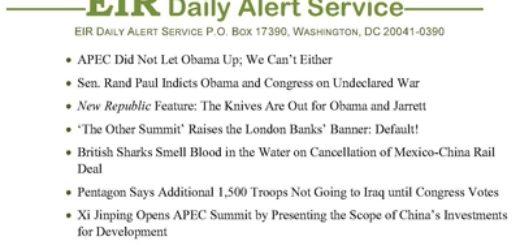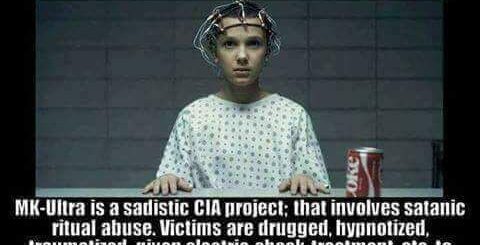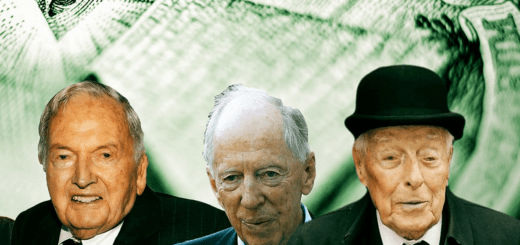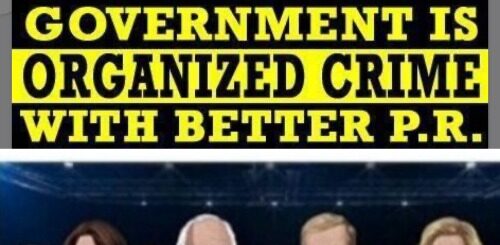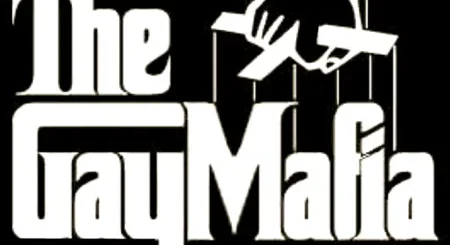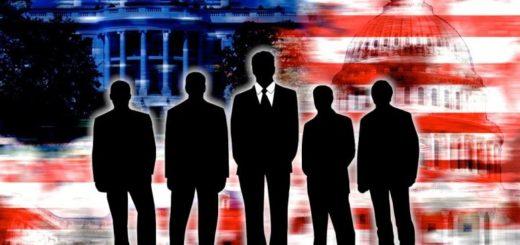EIR Daily Alert Service
THURSDAY, NOVEMBER 3, 2016
Volume 3, Number 52
EIR Daily Alert Service
P.O. Box 17390, Washington, DC 20041-0390
- Glass-Steagall Immediately After Election Day: Obama Can Be Beaten
- China Scholar Warns of Bloodbath if U.S. Launches Preemptive Attack on North Korea
- Putin Announces Pause in Aleppo, Calls on Terrorists To Leave
- Moscow and Tokyo Preparing To Sign Long-Awaited Peace Treaty
- President Xi Meets with Kuomintang Leader in Beijing, Calls for Peace Treaty
- The Silk Road Extends Into Eastern Europe
- Clinton and Trump Now Tied
- Obama Still Pushing Trans-Pacific Partnership Hard; Campaign Led by Citibank’s Froman
- LaRouche PAC’s Mass Effect: Candidates Call for Glass-Steagall
- U.S. Public Construction Zero Growth for a Decade—Hamiltonian National Bank Needed
- Expect China’s Test Launch of Long March 5 Rocket Very Soon
EDITORIALGlass-Steagall Immediately After Election Day: Obama Can Be BeatenNov. 2 (EIRNS)—As we have said, an honest national vote will show that Americans reject Barack Obama and his “legacy”: endless and costly wars, Wall Street impunity, economic stagnation and deindustrialization, indifference to rampant opioid and heroin addiction and despair. There is a sense in the American population with this election nightmare behind them, they can and must make big changes. Among millions of alert and intelligent citizens there is a groundswell for breaking up Wall Street’s casino, by re-enacting the Glass-Steagall Act of Franklin Roosevelt—for justice, and for the possibility of investing credit in the economy for a productive recovery. This is shown in polls of Democratic voters; in Donald Trump’s promise in an Oct. 27 speech to restore Glass-Steagall; in the parties’ platforms; by candidates in Congressional races committing to restore Glass-Steagall and “Hamiltonian” credit for infrastructure. Obama openly intends to use the “lame duck” period starting Nov. 9 to try to force through Congress his last insult—a Wall Street “trade agreement” rejected by American constituencies and candidates across the board. This is the Trans-Pacific Partnership, intended as his weapon to isolate and provoke China toward war. But he can be beaten if American citizens insist that the Congress pass Glass-Steagall immediately after the election instead. That will stop Obama from eliminating yet more productive American jobs; but it will do more. It will open the door to what EIR Founding Editor Lyndon LaRouche calls “four laws to save the United States”—beginning with Glass-Steagall and a national bank for productive projects of new infrastructure, on Alexander Hamilton’s principles. Obama’s obedience to Wall Street and his constant wars and drone killings, his deadly dangerous provocations against Russia and China, are of one piece. Hillary Clinton continues them. Just as clearly, they are failed policies both economically and strategically—more and more Asian countries and some in Europe are realigning their economic plans to China and Russia. And just as clearly do the American people reject these policies. With Glass-Steagall, millions of Americans know the start of what they want instead, the trigger for returning to progress. Let’s add to Obama’s legacy of failure, that he was the president who could not protect Wall Street from Glass-Steagall. STRATEGIC WAR DANGERChina Scholar Warns of Bloodbath if U.S. Launches Preemptive Attack on North KoreaNov. 2 (EIRNS)—John Delury, a China expert at Seoul’s Yonsei University, writes on the U.S.-Korea Institute at SAIS website “38 North” that if the U.S. launches a preemptive strike against North Korea’s nuclear facilities, China will honor its defense commitments to North Korea and go to war. On the other hand, Delury writes, China would be a cooperative and helpful partner with the United States were it to open negotiations with the North. The article is covered in the Korean Herald and other media. Delury assesses the disaster of Obama policy towards North Korea, and makes the assumption that Hillary Clinton will continue and escalate Obama’s confrontational policy. He says that the talk of a preemptive strike is gaining support in the Obama administration and will likely be continued by Clinton. Delury says that in addition to those advocating military action, there are those who want to escalate economic sanctions, which he calls “boa constrictors.” Both policies will be opposed aggressively by China and risk confrontation between the U.S. and China. “While U.S. officials are consulting intensely with their South Korean counterparts, not enough attention is being paid to Beijing’s perspective, even though China would figure heavily into any prospective U.S. action toward the North. By examining Beijing’s role in each of the three main North Korea policy strategies under debate in the United States, the ‘China factor’ emerges as a decisive one, in ways that policy makers need to weigh carefully,” Delury writes, under the headline “The ‘China Factor.’ ” “How might Beijing react to a U.S. pre-emptive or surgical strike on the North? The question is often evaded, perhaps because the answer makes a military solution considerably less attractive. North Korea is, after all, China’s only defense treaty ally in the world, and [China] is obligated to ‘immediately render military and other assistance by all means at its disposal’ to defend Pyongyang if attacked. Their 1961 treaty is often overlooked or trivialized, occasionally by Chinese academics themselves. But the agreement remains in force, underscoring North Korea’s unique place in Chinese foreign relations. “To be sure, North Korea would be on its own if it were to attack U.S. allies or assets in the region, let alone U.S. territory. But if the United States launches a pre-emptive strike not to prevent a specific, imminent missile attack, but rather to prevent North Korea from perfecting an intercontinental nuclear strike capability, it is unlikely to meet Beijing’s standard for jus ad bellum [right to go to war]. On the contrary, a strike of this nature could likely drive Beijing to side with the North in accordance with their 1961 treaty. In the furious military retaliation that Pyongyang would muster after a U.S. strike, South Korea and the United States could not count on Beijing’s support and indeed may face Chinese intervention on the peninsula, as in October 1950. ‘Surgery’ would rapidly descend into a bloodbath. ‘Pre-emption’ would start a war.” On the other hand, Delury says, China would welcome and cooperate with U.S. negotiations with Pyongyang. “Fighting for engagement and negotiation with North Korea in the U.S. foreign policy debate is an uphill battle. But proponents of engagement have one trump card: When Washington engages, the China factor becomes an asset in dealing with North Korea, rather than a liability or roadblock. Beijing, after all, is steadfast in its strategy of engaging Pyongyang, and it is perpetually looking for U.S. openness to negotiation. China’s security policy toward North Korea is unwavering: The goal is denuclearization, the preconditions are peace and stability, and the method is dialogue. If the next U.S. president adopts an engagement strategy, Xi Jinping’s government would likely step up its own work to achieve short-term breakthroughs and long-term solutions. Paradoxically, Washington’s best chance of getting China to apply constructive pressure on its errant neighbor is through a major U.S. initiative to negotiate with Kim Jong Un.” Putin Announces Pause in Aleppo, Calls on Terrorists To LeaveNov. 2 (EIRNS)—Russian President Vladimir Putin has announced a pause in the bombing of Aleppo for Nov. 4, calling on all fighters to leave Aleppo through two corridors that will be set up by the Syrian Army, reiterating that they would be allowed to keep arms. Gen. Valery Gerasimov, the chief of the Russian General Staff, said the militants failed to break through the blockade around the city last week, while refusing to accept Russia’s earlier proposal to leave eastern Aleppo with their weapons. “Considering that our American colleagues were unable to separate the opposition from terrorists, we are addressing all militant leaders directly, urging them to cease hostilities and leave Aleppo with their arms,” he said. “Two corridors will be opened, from which Syrian troops and weapons would be pulled back.” One of the corridors for the militants leads to the Turkish-Syrian border and another one to Idlib, and during the Oct. 28 pause, six additional corridors will be opened for civilians wishing to leave the city, Gerasimov said. NEW WORLD ECONOMIC ORDERMoscow and Tokyo Preparing To Sign Long-Awaited Peace TreatyNov. 2 (EIRNS)—Russia Beyond the Headlines today cited Valentina Matvienko Chairperson of Russia’s Federation Council (upper house of the Federal Assembly), on the preparation of a draft peace treaty between Russia and Japan, scheduled to be signed when the Russian President Vladimir Putin visits Japan on Dec. 15. Such a treaty has been awaited for 70 years since World War II ended. “There have already been a series of consultations at the level of deputy foreign ministers,” Matvienko said, adding that she was confident that Russia and Japan could “draft a mutually acceptable peace treaty.” In line with what Matvienko said, Jiji wire reported today, that Shotaro Yachi, the head of the secretariat of Japan’s National Security Council, and a key diplomatic aide to the Japanese premier, “will be visiting Russia (Nov. 8-10) to lay the groundwork for a bilateral summit between President Putin and Prime Minister Shinzo Abe set for Dec. 15.” Following the end of World War II, the San Francisco peace treaty was signed (1951) with most of the Allied states, which guaranteed Japan’s independence and territorial integrity, and the terms under which Japan was re-admitted into the international community. The Soviet government did not sign treaty in protest of the fact that the United States decided to omit Communist China from the discussions. As a result, Russia and Japan did not sign a peace treaty although they had established diplomatic relations in 1956. The Russian-Japan peace treaty will have a profound positive effect on the Eurasian region where Japan, along with China, India and Russia, are actively pushing infrastructure-centered economic development. Singapore-based Channel News Asia reported today, for example, that Japan’s Prime Minister Shinzo Abe announced aid worth ¥800 billion (about $7.4 billion) to Myanmar over five years. He made the announcement at a joint news conference with the visiting Myanmar leader Aung San Suu Kyi in Tokyo. President Xi Meets with Kuomintang Leader in Beijing, Calls for Peace TreatyNov. 2 (EIRNS)—Chinese President Xi Jinping met with the leader of Taiwan’s Kuomintang Party (KMT) Hung Hsiu-chu, on Nov. 1. Ms. Hung is on a five-day visit to China to improve relations between the two sides of the Taiwan Straits and to improve party relations between the KMT and the Chinese Communist Party. Ms. Hung began her trip with a visit to the Sun Yat-sen Memorial, to honor the founder of the Chinese Republic and the founder of her party. She said that the mainland and Taiwan, inspired by Dr. Sun, would work together to rejuvenate the Chinese nation and improve the lives of the people, promote peace and development, and create a brighter future. This is her first visit to the Chinese mainland as party leader, and the first visit of the KMT leader since the last Taiwan election in which the KMT lost power to the pro-independence Democratic Progressive Party. While DPP leader Tsai Ing-wen has not proposed Taiwan independence, she has expressed skepticism toward the 1992 Consensus signed by the two parties, which led to increased relations between the mainland and Taiwan. The 1992 Consensus states that there is only one China, a position that was long accepted by both sides during KMT rule in Taiwan. Relations have been frosty because of Tsai’s ambiguity on the 1992 agreement. “Whether the 1992 Consensus is acknowledged or not raises the essential question of whether the mainland and Taiwan belong to one country or two,” Xi said. “When it comes to this cardinal issue of right or wrong, not the slightest obscurity or wavering is allowed in our stand.” Today there were hundreds of people from both sides of the Strait gathered at a forum to discuss issues from politics to economics, culture, social issues and youth. Hung will take part in these discussions and will meet with party and government leaders while she is in Beijing. The Silk Road Extends Into Eastern EuropeNov. 2 (EIRNS)—China is broadening its Belt and Road initiative into more international organizations, which is the purpose of Chinese Premier Li Keqiang’s eight-day trip to Kyrgyzstan, Kazakhstan, Latvia, and Russia, which started today. Li will attend the 15th prime ministers’ meeting of the Shanghai Cooperation Organization (SCO) in the Kyrgyz capital of Bishkek, and the fifth leaders’ meeting of China and Central and Eastern European (CEE) countries in the Latvian capital of Riga. The CEE meeting is described as 16+1, the +1 being China. The EU will participate, and Russia will attend as an observer. China’s official Xinhua reports: “As the four countries are all located along the ancient Silk Road, analysts believe Li’s Eurasia tour will boost the joint implementation of China’s Belt and Road Initiative.” It continues, that “Regular bilateral and multilateral meetings are of great significance, as they help enhance strategic mutual trust between China and the relevant countries and regions, ensure a systematic and steady policy implementation, and beef up bilateral and multilateral cooperation. … Production capacity cooperation is top of Li’s agenda during the four-nation visit. A host of deals are expected to be signed on deepening practical cooperation.” U.S. POLITICAL AND ECONOMICClinton and Trump Now TiedNov. 2 (EIRNS)—The latest Washington Post-ABC News poll today is now a tie nationally, but the Post says there’s no evidence that the FBI announcement Oct. 27 regarding emails connected to Clinton’s staff has affected the candidates’ standing. What, then, accounts for Trump’s large improvement in this poll? Could it be his call for Glass-Steagall? The poll also finds that Americans now see Clinton as far more dishonest than Trump—extraordinary! “Hillary Clinton and Donald Trump are tied in the new Washington Post-ABC News Tracking Poll, which finds Trump now holds an edge on which candidate is honest and trustworthy.” Some 59% find Clinton “not honest and trustworthy”; 49% say that about Trump. It’s Trump’s standing on “honesty” which has changed from poll a week ago. Obama Still Pushing Trans-Pacific Partnership Hard; Campaign Led by Citibank’s FromanNov. 2 (EIRNS)—The Wall Street Journal reports today, evidently from an interview with U.S. Trade Representative Michael Froman, that President Obama remains on a full-court press to try to get a vote for the Trans-Pacific Partnership (TPP) “trade agreement” in the November-December “lame duck” session of Congress. Obama’s TPP is really no free trade agreement at all, but a carte blanche for multinational banks and corporations to change national laws, and/or be immunized from national laws which would regulate them. Most onerous are the virtually eternal patent protections from competition which TPP would grant to pharmaceutical giants, and the “Investor-State Resolution Mechanism” which would allow multinationals to complain to international panels of corporate lawyers, to have national laws (such as, e.g., Glass-Steagall laws) set aside. In a last attempt to ram TPP through as part of his malign “legacy,” Obama is relying mainly on Republicans. The Journal notes that Donald Trump’s strong opposition to TPP has turned about a dozen Republicans who voted to give Obama “fast track” authority, into “no” votes on TPP. Froman, who is leading the blitz, has already met with more than 100 House and Senate Republicans, he claims; Obama is doing overlapping meetings. To Obama’s tired “block China’s influence” argument, is being added the insistence that TPP be done before Trump or Clinton has a chance to kill it. Froman in 2008 was the top Citibank executive who proposed and vetted a large number of Obama’s first Cabinet appointments. The WikiLeaks releases of hacked e-mails of John Podesta, show that Robert Rubin, current Treasury Secretary Jacob Lew, and Froman dominated Obama’s transition process while all three were still decision-makers at Citigroup, running the bank that had destroyed Glass-Steagall and then destroyed itself. LaRouche PAC’s Mass Effect: Candidates Call for Glass-SteagallNov. 2 (EIRNS)—Americans are demanding restoration of the Glass-Steagall Act to shut down Wall Street casino banking, even as they are expressing strong opposition to the war-and-Wall Street policies of President Barack Obama and Hillary Clinton.
COLLAPSING WESTERN FINANCIAL SYSTEMU.S. Public Construction Zero Growth for a Decade—Hamiltonian National Bank NeededNov. 2 (EIRNS)—What kind of fraud was President Obama’s ARRA—the “Stimulus Act of 2009”—which was supposed to be focused on helping states and cities recover employment and construction? Infrastructure spending by states and cities in the United States, usually reported as part of “municipal public construction,” has been completely stagnant for 10 years, according to Commerce Department data reported by the Wall Street Journal Oct. 27. And in fact, it is actually lower now than in 2009 before the ARRA took effect. The problem there, the newspaper reported, is state and city tax revenues, which have never recovered from the 2008 crash. Inflation-adjusted tax revenues are lower than pre-2008 in 21 states. Nationally, municipal revenues are still falling, at 0.6% lower than 2015 through the first nine months of the year. But at the Federal level, construction spending is also falling. In September it was 0.2% below September 2015; public construction, which has been steadily falling, dropped by another 0.9% in September. What we require for the new water, power, and transport infrastructure the states need, is a Hamiltonian national bank; it can purchase the new infrastructure bonds of the states as they participate in national infrastructure projects like high-speed rail corridors being funded by Hamiltonian national credit. The “infrastructure bank” proposals of candidates Trump and Clinton do not meet this standard. Clinton’s (actually designed by Sen. Chuck Schumer of New York) simply gives companies which are holding their funds “offshore” to avoid taxes, a huge tax break to bring them back. Trump’s “national infrastructure bank” would not be national at all, but entirely privately capitalized (also with tax breaks) and owned. A Hamiltonian national credit bank, as called for in Lyndon LaRouche’s “four economic laws to save the nation,” requires national leadership direction of credit into the most technologically advanced “infrastructure missions.” SCIENCE & INFRASTRUCTUREExpect China’s Test Launch of Long March 5 Rocket Very SoonNov. 2 (EIRNS)— China space watchers report signs that China will carry out its test launch of the Long March 5 rocket over the next one or two days. Andrew Jones reports in Global Times that the first test of a Long March 5 rocket will be tomorrow, as the vehicle is fueled, and an airspace restriction notice has been issued today. (This advises aircraft to stay out of the area.) Similarly, Aviation Week reports that a traffic restriction notice has been issued around the launch complex. This is a critical test, upon which rests China’s ability to launch the components for its space station, and its lunar sample return mission, Chang’e-5. The Long March 5 is a quantum leap to the next level in China’s launch capability. Its 25-ton payload capability is two and a half times that of its largest current launcher. Although promoted as a more “environmentally friendly” rocket, since it does not use corrosive chemicals for fuel, the breakthrough is the use of an advanced liquid hydrogen engine, which the U.S., under Krafft Ehricke, pioneered, and which other space powers have taken decades to develop.
|
|
|

